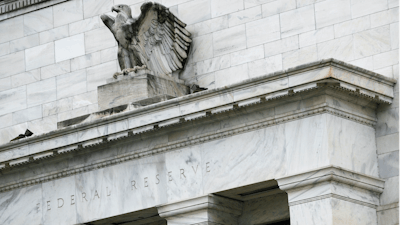
WASHINGTON (AP) — The Federal Reserve will reduce the minimum loan level in its small business lending program and waive some fees to try to boost participation in a program that has so far provided little assistance to struggling companies.
The Fed announced Friday that it will support loans of as low as $100,000 in its Main Street Lending Program, down from an earlier minimum of $250,000. The Main Street program seeks to support small and mid-sized businesses by buying 95% of a loan from participating banks. This is intended to limit the risk to banks and encourage them to lend more.
Yet so far the program has made just 400 loans for a total of $3.7 billion — far below the $600 billion in total funding that the Fed has said it is willing to lend. The Treasury Department has provided $75 billion to backstop any losses.
Main Street's shortcomings have provided fuel to many critics who charge that the Fed has done more to help Wall Street and large corporations than small businesses during the pandemic. Fed Chair Jerome Powell has responded that many small companies, hit hard by the downturn, likely need grants rather than loans. Yet the Fed has only “lending powers,” Powell has said, “not spending powers.”
To encourage banks to make the smaller loans, the Fed will eliminate a 1% transaction fee that it charges banks for loans below $250,000. It will also double the fee that the Fed pays banks to service the loans to 0.5%, from 0.25%.
And the central bank said that companies seeking to borrow from the Main Street program may be able to exclude loans of up to $2 million that they have received from the Paycheck Protection Program, the small business lending program that was established by the aid package Congress enacted in March.
If a borrower has applied for that loan to be forgiven, it can exclude it for the purposes of calculating its outstanding debts. Doing so would allow it to borrow more under Main Street.
The Main Street program offers five-year loans to companies and nonprofits with up to 15,000 employees or $5 billion in revenue. There are no principal payments for the first two years of the loan and no interest payments for the first year.
Members of Congress have pushed Powell at recent hearings to make the program more attractive. Yet Powell suggested in testimony last month that “creditworthy” small businesses may be able to borrow from banks without any need for help from the Fed.
William English, a finance professor at the Yale School of Management and a former senior Fed official, said the changes announced Friday will likely help boost participation in the program. English and Nellie Liang, another former Fed official, wrote in a study earlier this year for the Brookings Institution that the Fed should reduce the minimum loan amount and increase fees.
Yet even if more loans are made, the smaller sizes now allowed suggest the dollar amount of lending won't rise that much, English said.
Many small banks and companies have been discouraged by the burdensome paperwork the program requires, English said.
Main Street is intended for companies that had healthy businesses before the coronavirus pandemic, the Fed says, and will likely return to full strength once the pandemic is over.
But as the virus outbreak worsens again, with confirmed cases reaching record levels this week, many businesses may not be able to take on a loan, English said. One option would be for the Fed to forgive all or part of a Main Street loan, but that would require an act of Congress.
Under certain criteria — say, if a state ordered business shutdowns again — “it would be very useful to be able to say that some fraction of the loan would be forgiven,” English said.






















